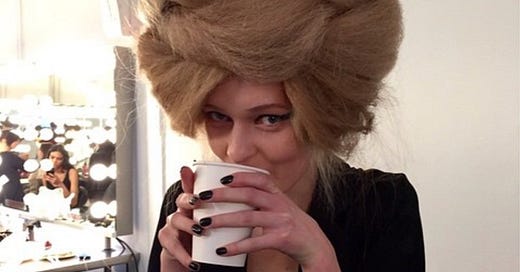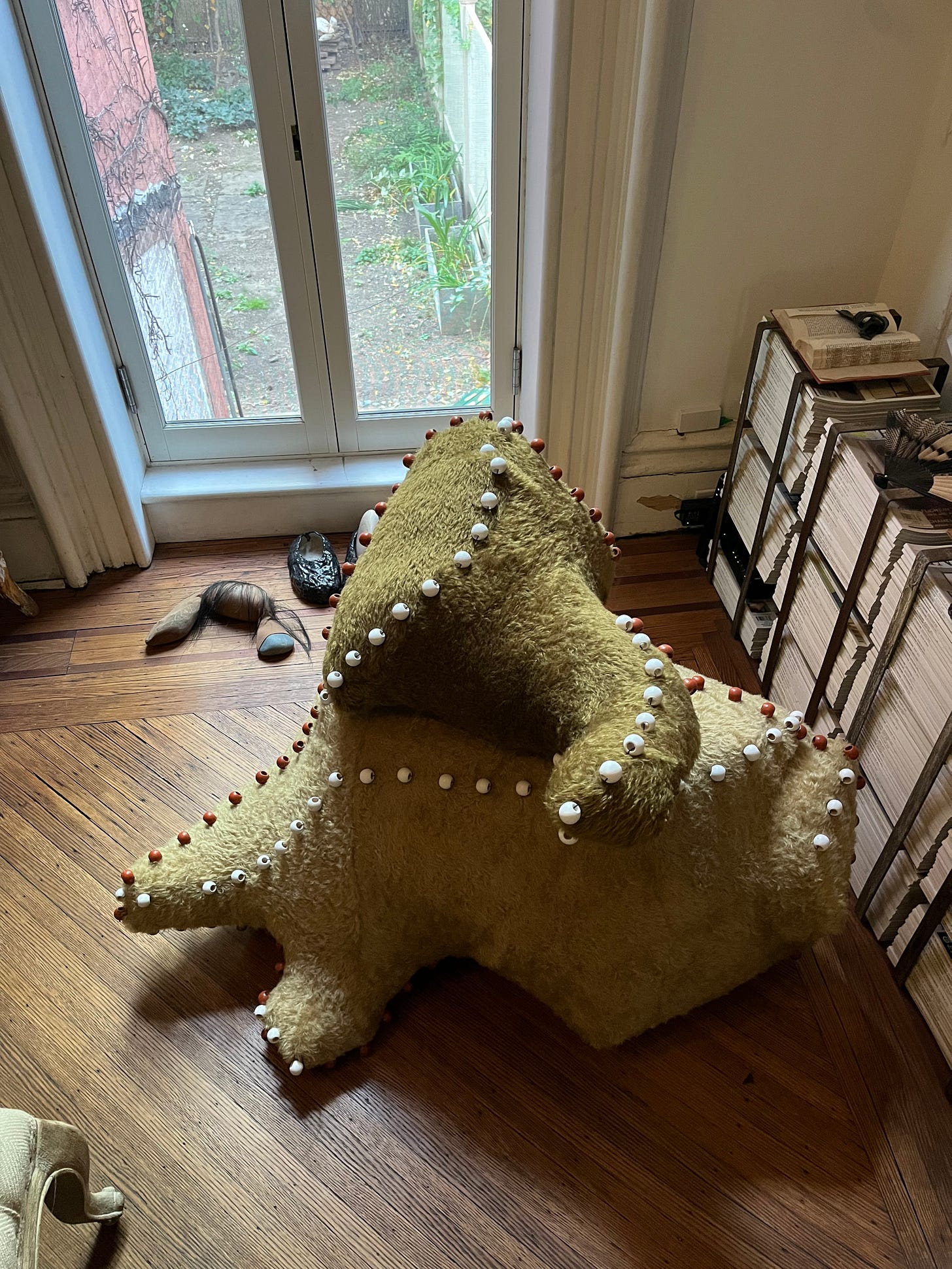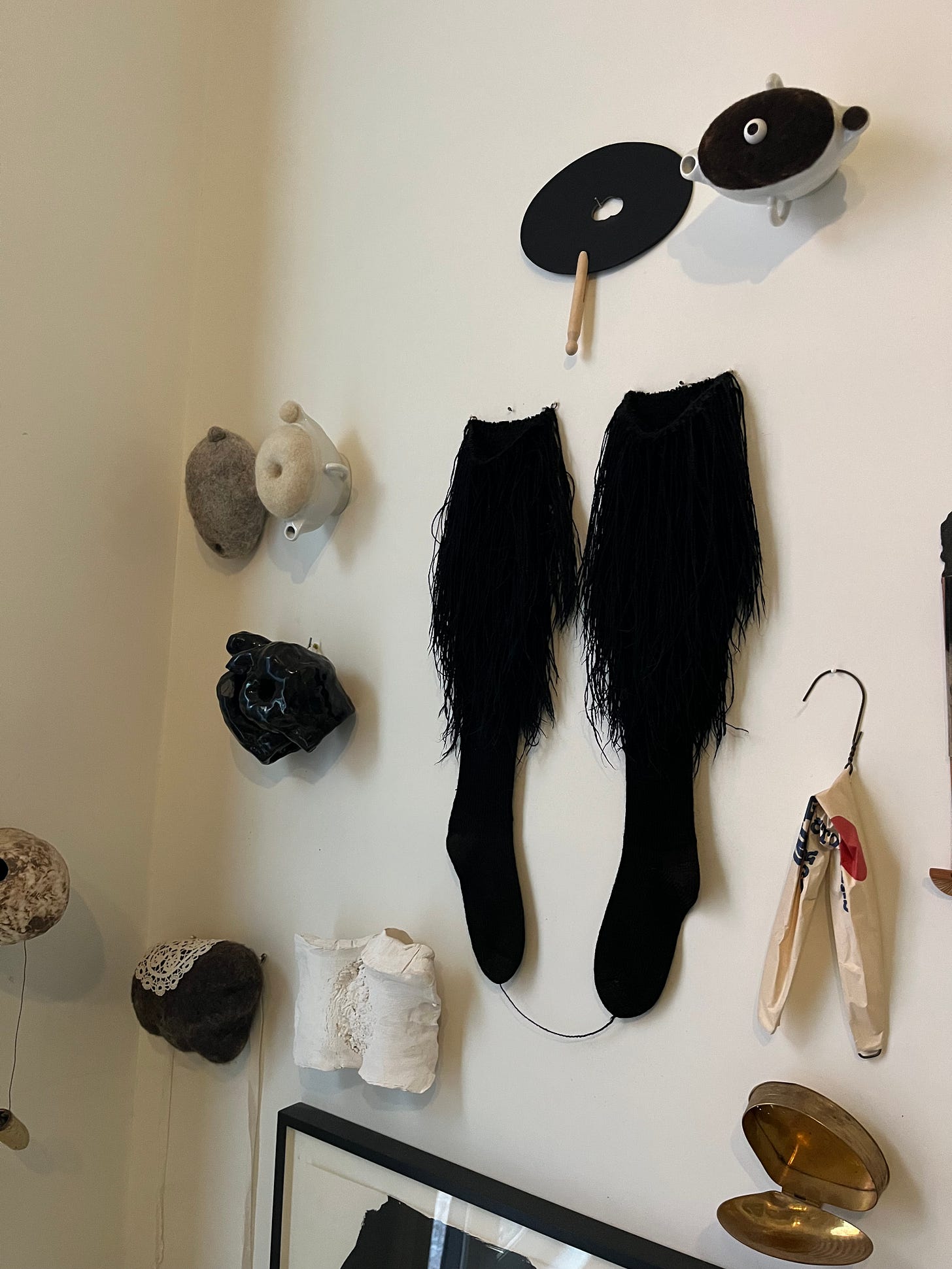My first full-time journalism job was at Fashionista, one of the great internet records of the fashion industry. When I think about that time, I feel a pang of nostalgia so intense that I have to stare out the window for a moment or two, dramatically, to recover. I was in my early twenties in New York City, with a mandate to blog and a license to slink around backstage at fashion shows. For me, it was a feast.
One of my favorite Fashionista stories I wrote was a 2015 interview with the designer Mona Kowalska, whose clothing brand, A Détacher, produced unusual knitwear, crisp printed poplins, and chunky heels. When I visited Kowalska at her store on Mulberry Street, she was warm and engaged. Groundedness isn’t an attribute you typically associate with fashion designers, but Kowalska struck me as someone with real wisdom about life. I thought she looked a bit like an elven sage, with her pale eyebrows and hair caught agelessly between blonde and white.
In our interview, Kowalska told me that she didn’t want her brand to get too big; that she felt that many brands designed “a lot of landfill”; that she believed in a four-day work week, leaving a day for errands, a day for idleness, and a day for intellectual pursuits. This was an era of venture capital optimism in fashion and beauty, when brands like Glossier, Outdoor Voices, and Warby Parker were heating up. Kowalska’s interest in limiting growth seemed radical by comparison and, to me, at least, exceedingly cool. At 23, nobody had told me you could do less.

Kowalska shuttered A Détacher in 2019, when she was 55. As she told a New York Times reporter who attended the brand’s goodbye party, it was time for a change, after 21 years in business: “Technically, things got easier. But always having new ideas that felt like genuine expressions, that part became more elusive.” She was considering making fine art instead.
Last summer, I got in touch with Kowalska to see if she might be open to another interview, nearly a decade after our original conversation. She had indeed pivoted to art, and I wanted to know how her new career was going — and, with greater distance, what she made of her time in the fashion business. I probably wanted some more life wisdom, too.
And so, one bright and chilly morning in October, I visited her at home in Clinton Hill, in Brooklyn. We sat on a big couch in her living room, which smelled of palo santo and was cluttered, in a nice way, with her art. Kowalska was dressed simply: She still enjoys clothes, but all she wants these days is a good pair of trousers, a good shirt, and a good sweater. (She hasn’t yet figured out what to do with the decades of archival A Détacher upstairs.)
Although fashion is a famously difficult business, and particularly so for independent designers, Kowalska told me that financial pressure didn’t play a role in her decision to close up shop. A Détacher wasn’t going bankrupt; the business, which had no investors, had been stable. The decision was more personal and existential than that. “I was small picture happy, big picture unhappy,” she said. The small picture was spending her days with a team she adored, striving to make clothes that would be her favorite thing (because then they might be someone else’s favorite thing, too). The big picture was the overwhelming sense that she was doing the wrong thing with her life. Fashion had been her entire career, but now she wanted to think about different things.
Kowalska mulled the decision to close A Détacher for five years — meaning, to my surprise, that she was already percolating when I interviewed her for Fashionista. Still, she felt an urgency to act. People in their twenties and thirties can meander through their wrong turns and dissatisfactions, she told me, but a person in her fifties must change course more decisively. “To have a company and arrive at that conclusion, that you were happy for all those years, but this is never, ever, ever going to satisfy you again — it’s very hard,” she said.
Kowalska and her team weren’t producing new collections during A Détacher’s final year in business, leaving her time to begin a new creative project amid the light activity of archiving and shredding. She carried a notebook to work and spent a few hours a day writing down everything she remembered of life in Warsaw, Poland, which her family left for Baltimore when she was nine. They lived in what Kowalska considers the most beautiful part of Warsaw: It was central but surrounded by parks, and safe enough for her to take the bus by herself. “I really wanted to go back,” she said, speaking of those early years in Baltimore. “I missed my grandmother. I missed my aunt. I missed the freedom.”
The way Kowalska tells it, writing down her memories from that age sounds like an act of returning — to a formative time in her life, to her hometown, to an earlier version of herself, maybe. “Slowly, I think that really sort of unlocked something,” she said.
In her transition out of fashion, Kowalska took a three-week trip to Peru, where A Détacher had produced much of its collection. She had intended to do some fiber projects with an old collaborator, but wound up signing up at a ceramics studio, too. Clay made sense to her — Kowalska describes it as a “generous” medium — and she enjoyed seeing herself improve day after day. “What I loved about it, also, is that you could do the whole thing yourself. I was not dependent on a million people the way you are in fashion,” she said.
Those early ceramics pieces were acts of play. Kowalska’s daughter sent her a photo of a wallaby, so she made a wallaby out of clay, then asked for more photos of cute animals. In her Brooklyn apartment, a later series of animal sculptures sits on the mantel and on the floor around the fireplace. With these pieces, Kowalska formed the shape of a creature roughly, then applied a sketchy layer of glaze to its body; the result is a loose but distinct portrait of each animal. “They feel more like drawing,” she said. I found them immensely charming, both in execution and subject matter: a pair of sheep, a monkey sitting on the back of a hyena, a poodle on top of a wolf.
On the wall of Kowalska’s apartment, there were teapots with bulging felt lids and a pair of furry black socks connected at the toes by a dangling thread. Near a stack of magazines was a fuzzy, bulky, undulating mass — an alien’s home planet, or its living room furniture — studded with trails of white and red beads. There was a meaty “bear leg” made of olive mohair, which Kowalska created using the pattern for a stuffed teddy bear. “There’s a six-foot bear leg upstairs,” she told me. She showed them side by side in her first solo exhibition, at Kerry Schuss Gallery, in 2022.
When Kowalska started inviting people to visit her studio, she wasn’t sure how to explain her leaps from one medium to the next. Now, she feels that the through-line is more obvious. To me, her art feels like an extension of the sensibility she cultivated at A Détacher: It’s tactile, sneaky-funny, humble but lovely. When I texted a fashion friend to ask for her recollections of A Détacher, she noted that the brand’s prints were often arty, abstract riffs on common patterns, like plaid, polka dots, and florals. Kowalska’s art is a little like that, too. In her teddy bear legs, felt-topped tea ware, and smudgy sheep, common things become strange and delightful.
Kowalska told me that after our first interview, back in 2015, she heard from people who were struck by A Détacher’s policy of a four-day work week. When she talks about it, though, it sounds like the most logical thing in the world. With Mondays off, people were able to properly attend to their private lives — and after spending three days at home, they were more than ready to return to work. “Tuesday would be our Monday, and we would really just get in there and get two days of work done,” she said. Her team was efficient, in part because they didn’t have to penetrate through layers of corporate approvals. “When every decision, small and large, is scrutinized in exactly the same way, and when everything is given the same importance, I think that’s the problem,” she said. “Some things are not that important.”
Kowalska makes the idea of revising your status quo seem possible, whether that’s a five-day work week or the career you chose years ago. Change is scary, but in her telling, it’s not only positive but natural. When I brought up the idea of figuring it all out — a preoccupation that’s taken hold of me in my thirties, although I didn’t quite cop to that in our conversation — she gently redirected me: “I think you just want to be changing.”
Thanks for reading, and please feel free to share this with someone who you think might enjoy it. I’ll see you back here for the Oscars next week.
With love,
Eliza









Thank you for honoring Mona's point of view. I cherish my scent memories of that gorgeous store. Oh the textures, the space between the things, the rounds of boiled wool or cat fur, I couldn't ever tell. The way she looked at us. The mysterious back area. I cherish my A Detache shirts and dresses and rings and leather sandals.